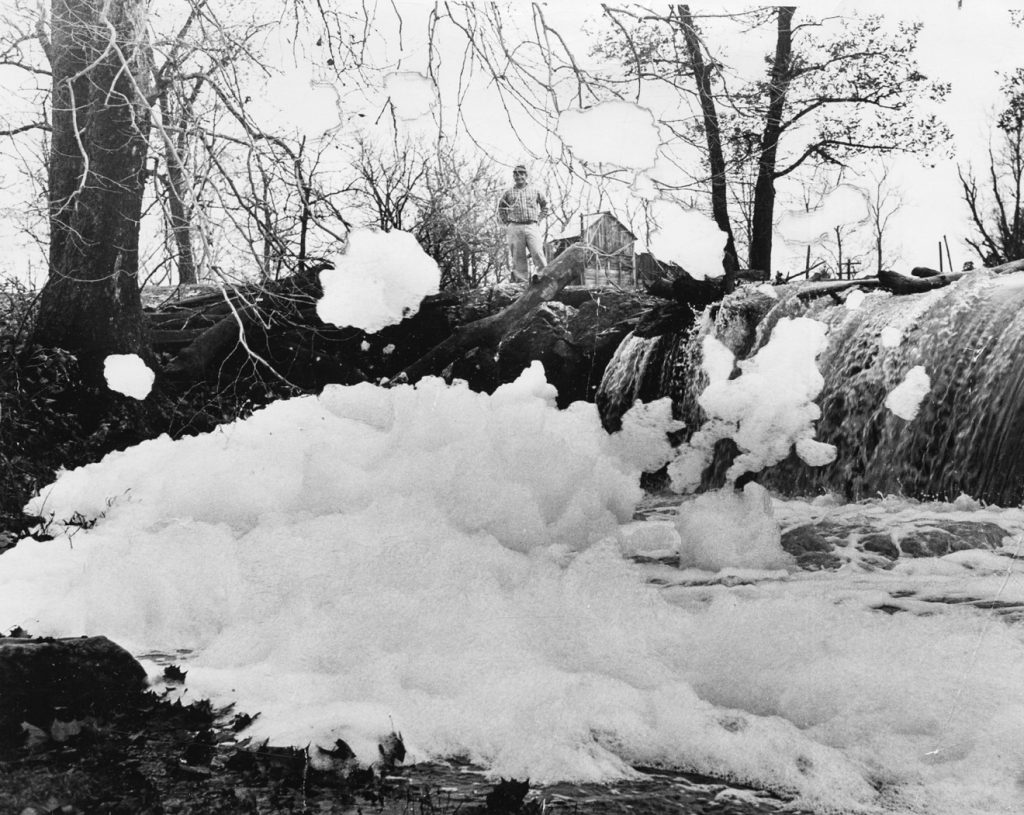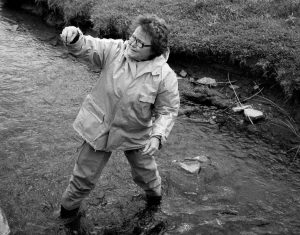RiverRoots: Stories of the Conestoga River:
20th Century Struggles and 21st Century Dreams
RiverRoots: Stories of the Conestoga River
River Roots is Susquehanna NHA’s blog series featuring history from York and Lancaster Counties that showcases the Susquehanna River’s historic, cultural, and natural resource contributions to our nation’s heritage.
Susquehanna NHA is pleased to introduce guest blog writer, photographer and author of The Conestoga River: A History, Donald Kautz. This is the fourth and final blog post in a four-part series on the Conestoga River by Mr. Kautz.
RiverRoots Heritage Blog
Lancaster’s Historic Waterway
This is the fourth and final article in the series covering a brief history of the Conestoga River. The first article described the conditions prior to European settlement. The second article covered the colonial period and the importance of the river for transportation. The third article covered the Victorian era and described how the river served the conflicting services of recreation and waste disposal. In this article we will look at the impacts of that use (or misuse) of the river’s resources and what is being done to mitigate those impacts.
Sewage Treatment
As we moved into the 20th century, raw sewage was a major problem. Sewage entered the river at various points along the river, especially near the city of Lancaster. Lancaster City, like many older cities, has a combined sewer system where storm runoff and household sewage are mixed in the same system. This water was all returned to the river in three main sewer outfalls and two smaller ones. The dam at Levan’s Mill, about a mile below the city, prevented the sewage from flowing out of the city area.
Between Water Street and Levan’s Mill on low flow days, the river water contained about one-fifth raw sewage. The bottom of the stream was covered with a heavy deposit of sewage sludge. The river would be covered in foam on wash days. It was claimed that the area below the Rock Hill dam smelled like dirty wash water one hundred yards away from the river.

In the early twentieth century, pleas began to be heard to clean up the river. In 1906, the commissioner of health decreed that a dam be built below the intake of the city water works to prevent contaminated water from backing up into the water supply. WW1 intervened and no action was performed during the war years.
On January 3, 1920, an article in the Lancaster New Era, stated, “The stream with its possibilities for beauty, pleasure, usefulness, and healthfulness is now relatively unused, largely by reason of the discharge of the city’s raw sewage into it. Proper sewage treatment is urgently needed to remedy the present situation and is the first step toward making Conestoga Creek a valuable asset to the community.” The city put forward a plan to sell bonds in the amount of $825,000, approximately half of which was designated to build a sewage disposal system. The city held a special election on the referendum in May. The measure was voted down by a margin of three to one.
During the next decade and a half, there were many pleas and arguments on the urgent need for a solution to the city’s sewage problem. The February 1931 bulletin of the Lancaster Chamber included the headline, “What Shall It Be—Scenic Beauty or Open Sewer?”
Finally, in October 1932, plans for two sewage plants were presented to city council. The North Plant would be built on the Ranck farm east of the city and the South Plant on the site of the old power plant at Engleside. The North Plant began operating at the end of 1934, while the South Plant began operations in early 1935. At last, a major source of pollution in the river was mitigated.
Today, the system has the capacity to fully process the sewage load during normal water flow. But owing to the nature of Lancaster’s combined sewer system, the plants can become overwhelmed during periods of heavy rain, at which times raw sewage would still make its way into the river.
Dr. Ruth Patrick
In 1948, a team of scientists from the Academy of Natural Sciences in Philadelphia, headed by botanist Dr. Ruth Patrick, spent the summer wading the Conestoga and its tributaries studying the plants, fish and exceptionally beautiful microscopic creatures with glass-like coatings called diatoms living in the river. Dr. Patrick developed the principle that the best way to determine the effects of man-made pollution in a stream was to study the organisms living in and near the water. The types of diatoms present in the water will identify the type of pollutants that are present. Dr. Patrick’s approach was to employ a team of scientists with expertise in various disciplines in biology, chemistry, and physics. She chose the Conestoga because it suffered from a variety of pollutants including sewage, fertilizer, and toxic substances from industry. Dr. Patrick invented a device called the “diatometer”, a plastic box containing microscope slides that could be placed in the water to collect algae samples. Her survey of the Conestoga was the first comprehensive water quality monitoring effort in North America. In 1949, she published a paper titled “A Proposed Biological Measure of Stream Conditions, Based on a Survey of the Conestoga Basin, Lancaster County, Pennsylvania.”

Earl Rebman
Lancaster retailer, Earl F. Rebman, served as president of the Lancaster Salvage Committee during World War II and later became president of the Lancaster Chamber of Commerce. During a public meeting in Lancaster in 1946, Rebman proposed the concept of a public boulevard along the Conestoga with parks, open space, and a convention hall as a “veterans of all wars memorial”. Ira Landis, who owned the old Conestoga Park tract, offered that riverfront property to the city at no cost as a seed to start the Conestoga Boulevard project. Unfortunately, the city did not accept Landis’ generous offer and the property was sold to private developers.
Ten years later, at a meeting of the Millersville Men’s Club, Rebman again pitched the idea of the Conestoga Boulevard and asked if the club would support an association to begin work on such a project. The club approved the idea and on April 12, 1956, the Conestoga Valley Association (CVA) was formed. The CVA planned to build a scenic boulevard along the Conestoga from Brownstown to Safe Harbor. The CVA also planned to eliminate stream pollution, reduce soil erosion along the banks, restore fish and wildlife, preserve historical buildings, and provide recreational areas of great natural beauty.

On June 15, 1958, the CVA dedicated two recreational areas for public use along the Conestoga. The first was located at the confluence of the Little Conestoga Creek and the Conestoga River, and the second area was near Safe Harbor. The CVA was also instrumental in many other projects in the Conestoga watershed. The restoration of President James Buchanan’s tomb, Rock Ford, the Andrew Ellicott House, the Hans Herr House, markers for the Martin Meylin Gun shop and one for Robert Fulton were all projects made possible by the association. So far, the Conestoga Boulevard remains an illusive concept, however efforts to reserve the riverfront for public use continue. For example, the Conestoga Greenway trail opened in 1999 to provide a walking trail along the river on the south side of the city.
Trash and Runoff
All throughout history, people have viewed the river as a place to dispose of trash and unwanted items. The river is assumed to be an endless flow of water that washes away anything that is thrown or dumped into it. The local scuba clubs know that the best places to look for artifacts in the riverbed are under bridges and at the sites of old bridges. People had the habit of disposing of things by throwing them off the bridge as they traveled across. It is not wise to wade the Conestoga in bare feet because in some areas, the bottom is littered with broken glass.
Even today, people will dump piles of trash or building supplies on the banks of the river under the assumption that they will eventually get washed away. One of the most common items seen today in and along the river are tires. Tires do not float, and they do not degrade; they just sit there stuck in the mud, causing a hazard and an eyesore. While dumping is a serious problem, not all the trash found in the river was deliberately dumped there. Much of it comes from littering or garbage spillage on the land that is later swept into the river by runoff.
The Conestoga River Club
The Conestoga River Club formed in 2021 as a nonprofit dedicated to education, conservation and improvement, including litter cleanups, restoration work with volunteers, more river access and better launch and take-out points. Todd Roy is the club’s founder and president. The club seeks to foster a connection with the river by providing public access for fishing and boating and organizing frequent opportunities for the public to become involved in river cleanup events. To date, volunteers have collected almost three tons of trash in and along the Conestoga. The club’s website is at https://conestogariverclub.org/

Conclusion
I hope you have enjoyed this trek through the history of the Conestoga River. What will happen next has not been written yet. The decisions and actions we take today will affect the stories that follow. It is good to look at the past to understand how we got to where we are today and to, hopefully, learn from mistakes that were made in the past. We do not want to be too critical of the people who came before us. They were acting on the knowledge and goals that they had at the time. But we can look at our current practices with a critical eye to ensure that we are making the best use of the resources that we have and with an eye to the future so that our children and grandchildren will be able to enjoy these resources in the same or, perhaps, better condition than we inherited them.
“Not Turner’s noted crook of Lune,
Nor Byron’s wide and winding Rhine,
Nor Burns’ banks of Bonny Doon
Nor boasted Tweed, nor lauded Tyne,
Not Delaware nor Brandywine,
Nor Spey, nor Tay, nor Don nor Dee,
Nor Shakespeare’s Avon, still more
fine.
E’er seemed so beautiful to me—
As tranquil Conestoga!”
-James D Law
If you would like a copy of my book, you may order one on my website at www.donaldkautz.com.
Meet the Guest Writer Donald Kautz
I grew up and still live among the beautiful farmland and rolling hills of Lancaster County, Pennsylvania. I have been interested in photography my entire life (starting with a Kodak Brownie box camera) but have gotten more serious with the hobby after my three children have become adults. I am a retired software engineer which probably explains why I enjoy the technical aspects of digital photography post processing as much as capturing the images in the first place. I enjoy landscape photography and love to photograph scenes around Lancaster County, focusing on the Conestoga River and the remaining water-powered grist mills that may still be found around the county. I am interested in the history of Lancaster County and have written a book about the Conestoga River.
